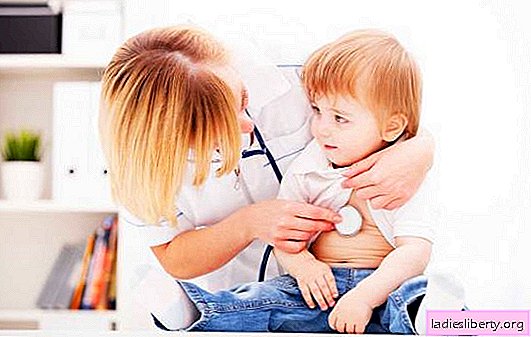
More than 10.8 million children under 5 years old can die from preventable infections by 2030. Timely preventive measures effectively prevent respiratory diseases. Scientists also presented 4 symptoms that will help parents distinguish between viral pneumonia and bacterial pneumonia, and take the right measures.
How common is pneumonia in industrialized countries?
In industrialized countries, pneumonia develops mainly in the elderly, in developing - in children. In 2016 alone, more than 880,000 children under 5 years old died from this disease.
Based on the previous figures, some countries in Africa and South Asia may be among the most vulnerable. In Nigeria and India, there are 1.7 million deaths from pneumonia in young children. 700,000 are in Pakistan, and 635,000 in the Democratic Republic of the Congo.
At the same time, the authors of the study emphasized that many deaths can be prevented using relatively simple measures. Better vaccination coverage, cheap antibiotics and good nutrition can save 4.1 million lives.
The head of Save the Children warned that prices for existing pneumonia vaccines should be “drastically” reduced.
Every year, more children die from pneumonia worldwide than from malaria, diarrhea and measles. The United Nations goals by 2030 also include the eradication of preventable mortality among children.
4 symptoms to help distinguish viral pneumonia from bacterial
To help doctors diagnose, British researchers identified 4 symptoms that occur in more than 80% of pneumonia cases. The results were published in the European Respiratory Journal.
Family doctors have noted in many children the typical symptoms of respiratory diseases - cough, sputum or shortness of breath. Most of them have a viral infection, so antibiotics are useless.
2 out of 3 cases of pneumonia are not treated properly by a family doctor. Many pediatricians prescribe antibiotics as a precaution. In the United States, doctors prescribe drugs to approximately 60% of patients.
The study included approximately 29,000 records of patients with suspected pulmonary infection. More than 5,000 general practitioners in the UK have previously studied these patients. A chest x-ray was done at 720, which confirmed the diagnosis of pneumonia in 115.
In the group of people with pneumonia, some symptoms occurred much more often than in healthy people. 86% of patients with pneumonia had at least 1 of the following 4 symptoms:
- body temperature above 37.8 degrees Celsius;
- noise when inhaling;
- heart rate more than 100 beats per minute;
- blood oxygen saturation below 95 percent (finger pulse oximetry).
If one or more of the 4 symptoms listed is present, it is most likely a viral infection. Symptoms such as the color of the outgoing sputum are of no diagnostic value.
The basic differences between the treatment of viral and bacterial pneumonia
Bacterial pneumonia is treated with broad-spectrum antibiotics. They are effective against bacteria and some fungi, but are useless against viral infections. As soon as the pathogen becomes known, the previously used antibiotic can be replaced by a more effective one.
Classical pneumococcal pneumonia is usually treated with penicillin. Haemophilus influenzae type b is a common pathogen in childhood that is successfully controlled with ampicillin.
Virus-induced pneumonia does not respond to drugs, so you need to be limited to general measures and avoid complications. However, bacterial superinfection often develops, which requires the administration of antibiotics.
Inappropriate use of antibacterial agents increases the risk of complications of a viral infection. The main treatment measures are rest, 1.5 liters of water per day and a balanced diet. Before using medicines, you must necessarily consult a doctor.











